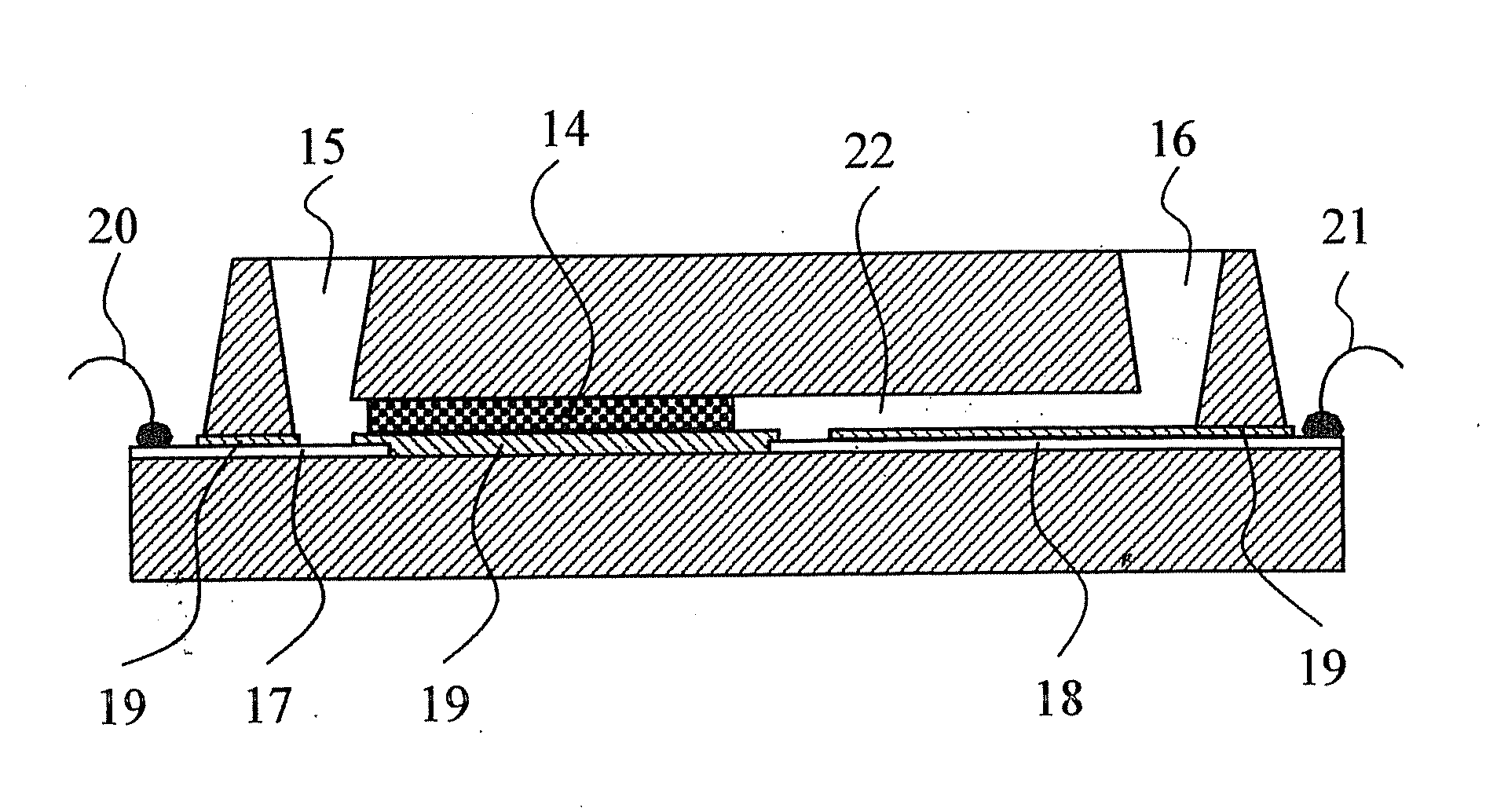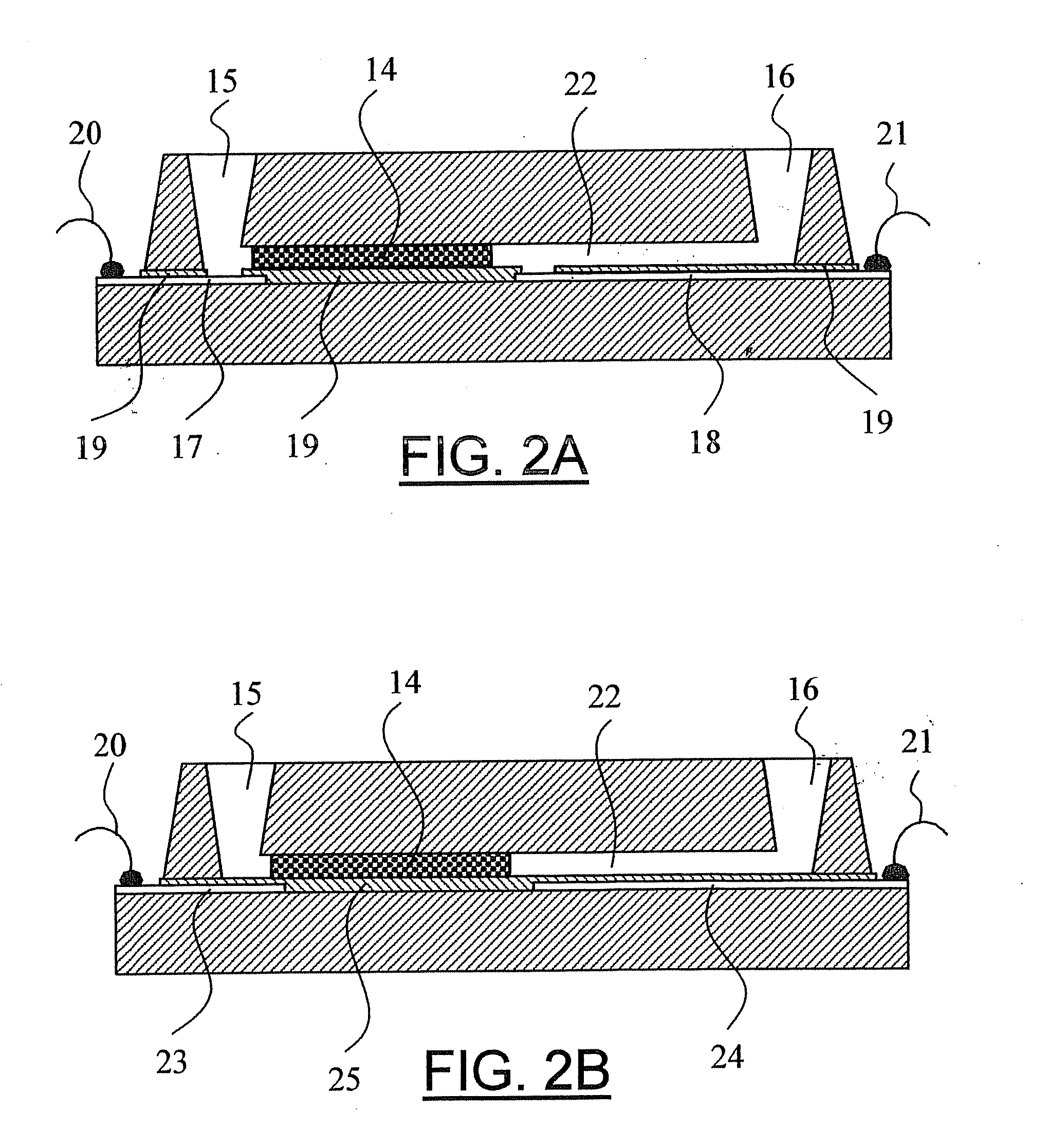Microfluidic Device
a microfluidic device and microfluidic technology, applied in microstructural technology, biochemistry apparatus and processes, material testing goods, etc., can solve the problems of porosity and mechanical integrity of materials, high electrical fields, and inability to sustain on silicon substrates without electrical breakdown, etc., to achieve high degree of sealing and avoid fluid leakage
- Summary
- Abstract
- Description
- Claims
- Application Information
AI Technical Summary
Benefits of technology
Problems solved by technology
Method used
Image
Examples
Embodiment Construction
[0072]FIGS. 1A-1E describe a preferred process sequence. FIG. 1A shows a glass substrate 1 on which a thin metal pattern 2 is applied. FIG. 1B shows the same substrate, after the deposition of a blanket layer 3 of an insulating material, preferably a PECVD silicon oxide layer. FIG. 1C shows the same substrate, after chemical mechanical polishing of the layer, so that the layer now has an atomically smooth upper surface 4. FIG. 1D shows the same substrate, after a photolithographic patterning process of the insulating layer. On this substrate, two types of sensing elements can be distinguished, a so-called “contact” detector 5, which has a defined bare area of metal in direct contact with the liquid, and which detects properties of a certain volume of liquid stretching from that detector area to a certain distance into the liquid, the volume being determined by the specific detection mechanism applied, and a so-called “contactless” detector 6, which detects properties of a certain, n...
PUM
| Property | Measurement | Unit |
|---|---|---|
| temperatures | aaaaa | aaaaa |
| temperature | aaaaa | aaaaa |
| temperature | aaaaa | aaaaa |
Abstract
Description
Claims
Application Information
 Login to View More
Login to View More - R&D
- Intellectual Property
- Life Sciences
- Materials
- Tech Scout
- Unparalleled Data Quality
- Higher Quality Content
- 60% Fewer Hallucinations
Browse by: Latest US Patents, China's latest patents, Technical Efficacy Thesaurus, Application Domain, Technology Topic, Popular Technical Reports.
© 2025 PatSnap. All rights reserved.Legal|Privacy policy|Modern Slavery Act Transparency Statement|Sitemap|About US| Contact US: help@patsnap.com



